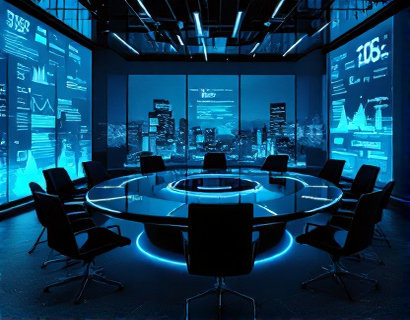Custom Business Card Creation for E-commerce Success
In the digital age, where online presence is paramount, the physical business card remains a crucial element in establishing a professional brand. For freelancers, entrepreneurs, and corporate leaders, a well-designed business card can make a significant difference in networking and brand perception. This guide delves into the importance of custom business card creation, offering insights into crafting a premium card that reflects your unique brand identity and enhances your professional image.
The Importance of a Professional Business Card
A business card is often the first physical touchpoint a potential client or collaborator has with your brand. It serves as a mini-resume, providing essential contact information and a glimpse into your professional persona. A well-designed card can leave a lasting impression, setting you apart from competitors and fostering trust. In the e-commerce space, where online interactions are common, a physical card can bridge the gap, adding a personal touch to digital communications.
Key Elements of a Premium Business Card Design
To create a business card that truly represents your brand, consider the following key elements:
- Color Scheme: Choose colors that align with your brand identity. Consistency in color usage across all marketing materials, including the business card, reinforces brand recognition.
- Typography: Select fonts that are easy to read and reflect your brand's personality. A mix of serif and sans-serif fonts can add visual interest while maintaining readability.
- Imagery: Incorporate high-quality images or graphics that resonate with your brand's message and values. This could be a logo, a subtle pattern, or an icon that represents your industry.
- Layout: A clean and balanced layout ensures that all information is easily accessible. Avoid clutter by prioritizing essential details such as name, title, contact information, and a unique identifier like a QR code linking to your online portfolio.
Customization Options for Unique Brand Identity
One of the greatest advantages of custom business card creation is the ability to tailor the design to your specific needs. Here are some customization options to consider:
- Material Selection: Choose from a variety of materials such as thick cardstock, recycled paper, or even metal or wood for a luxurious feel. The texture and weight of the card can significantly impact its perceived value.
- Finishes: Opt for special finishes like matte, gloss, or spot UV to highlight specific elements of your design. These finishes can add depth and make your card stand out.
- Shape and Size: While standard business cards are 3.5 x 2 inches, consider unique shapes or sizes that align with your brand's identity. Custom shapes can make your card more memorable and shareable.
- Special Features: Incorporate features like embossing, debossing, or foil stamping to add tactile elements that enhance the card's visual appeal and tactile experience.
Benefits of Custom Business Cards for E-commerce
For e-commerce businesses, custom business cards offer several advantages:
Firstly, they serve as a tangible representation of your brand, providing a physical connection to your online presence. This can help build credibility and trust with customers who may be hesitant to engage with a purely digital brand.
Secondly, custom business cards can be an effective networking tool. At trade shows, conferences, and industry events, a well-designed card can spark conversations and leave a memorable impression. It's a conversation starter that can lead to new business opportunities.
Lastly, custom business cards can enhance your brand's consistency. By using the same design elements as your website, social media, and other marketing materials, you create a cohesive brand experience that reinforces your identity.
Process of Creating a Custom Business Card
Creating a custom business card involves several steps, from design to delivery. Here’s a streamlined process to help you get started:
Step 1: Conceptualization
Begin by defining the purpose of your business card. What message do you want to convey? Who is your target audience? Consider these questions to guide your design choices. Sketch initial ideas or use design software to visualize your concepts.
Step 2: Selecting a Platform
Choose a reliable platform for custom business card creation. Look for a platform that offers a wide range of templates, customization options, and a user-friendly interface. Ensure the platform provides high-quality printing options and reliable shipping services.
Step 3: Design Customization
Use the platform’s design tools to customize your card. Upload your brand assets, such as logos and images, and apply the chosen color scheme and typography. Experiment with different layouts and features to create a unique design that stands out.
Step 4: Ordering and Printing
Once your design is finalized, proceed to the ordering process. Select the desired quantity, material, and finish. Review your order for accuracy and place it. Most platforms offer fast turnaround times, ensuring your cards are delivered promptly.
Step 5: Reception and Feedback
Upon receiving your business cards, inspect them for quality and accuracy. If everything meets your expectations, use them in your networking efforts. If not, most platforms offer a revision process to address any issues.
Tips for Effective Business Card Usage
To maximize the impact of your custom business cards, follow these tips:
First, always carry a sufficient number of cards with you, especially when attending networking events. Being prepared ensures you can exchange cards without missing opportunities.
Second, use your business card as a conversation starter. Introduce yourself and explain how the card reflects your brand. This can lead to deeper discussions and potential collaborations.
Third, consider digital integration. Include a QR code that links to your website, portfolio, or a specific landing page. This provides a seamless transition from the physical card to your online presence.
Lastly, keep track of the cards you distribute. Use a spreadsheet to note down the events and individuals you exchanged cards with. This can help you follow up and maintain relationships.
Conclusion
In conclusion, a custom business card is a powerful tool for e-commerce professionals looking to enhance their brand's professional image. By investing time and effort into designing a premium card, you can create a lasting impression, build trust, and open doors to new opportunities. Whether you're a freelancer, entrepreneur, or corporate leader, a well-crafted business card is an essential component of your brand strategy.











































